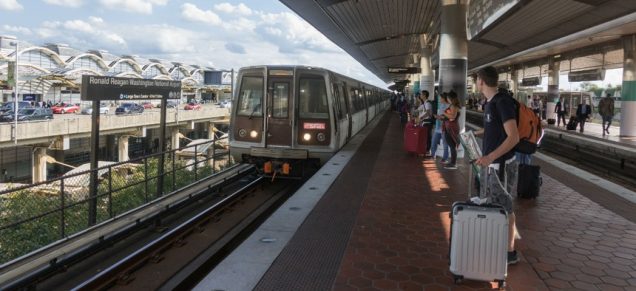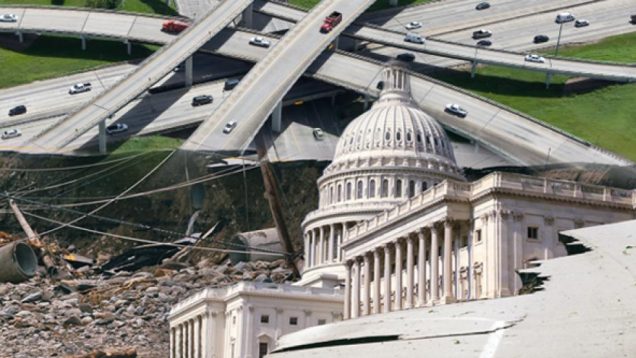Tagged: public transit
COVID-19 is a Perfect Opportunity to Reinvent America’s Mass Public Transit
As the coronavirus (Covid-19) has swept the globe, its impact on global health has been massive. However, this pandemic is not only wreaking havoc on the world’s physical health, but also its financial health. Throughout March 2020, as governments globally imposed restrictions on movement and on business, stocks plummeted. In response, the Federal Reserve slashed interest rates and has attempted to provide new sources of funding for business. Additionally, the federal government enacted a $2 trillion stimulus package. This package includes direct aid for businesses as well as individuals, in addition to support for the medical industry and other key parts of the economy. However, this bill merely provides a one-time cash infusion for a struggling and increasingly desperate economy. The US approach differs from what other countries have provided their citizens during this crisis. Other methods are more akin to ongoing support rather than a one-time payment. In fact, the UK government, in an attempt to curb unemployment, has promised to subsidize up to 80% of any worker’s salary who is facing unemployment, up to $2,900 a month. Many other countries have followed this model of providing continuing support to workers and businesses in an effort to limit unemployment. This is in contrast to the United States where, even after this stimulus was enacted, unemployment figures in the United States have climbed precipitously. Consequently, there have been discussions in Washington of a large infrastructure spending bill, akin to several New Deal programs, that would create thousands of jobs to help the United States economically recover as the health crisis recedes.
It has been reported that this infrastructure bill could be a multi-trillion dollar project. However, it is not clear that an agreement will be reached. For the duration of the Trump Presidency, infrastructure has been seen as a potential compromise issue that both Democrats and Republicans could support, yet an agreement has been elusive. Earlier this year, House Democrats released a proposal that would direct $760 billion towards rebuilding American highways, airports, and other infrastructure, with $10 billion going towards building community health centers. Additionally, this proposal included $329 billion for transportation systems, including $105 billion for transit agencies and maintenance. However, Trump and Congressional Democrats were not able to agree on a compromise agreement. Now that there is increased political pressure to provide jobs, an infrastructure deal is more likely than ever to occur. When it does, Congress should include vigorous funding specifically for mass transit.
First, the construction of mass transit can achieve the short term goal of the infrastructure bill: to create jobs. In fact, a recent light rail construction project between Durham County and Orange County in North Carolina was projected to create 20,000 jobs at a cost of just $2.5 billion. While it is unlikely that these job returns per investment would hold constant, these numbers suggest that a $1 trillion investment could yield 8,000,000 jobs. This would put a sizeable dent in to projected 20 million unemployment claims that could be filed as a result of the pandemic and subsequent economic downturn.
However, the United States should not throw money at a short term solution, without considering long term objectives as well. Investment in mass transit not only would result in short term jobs, but it would also yield many long term benefits that would impact society for a substantial period of time.
Studies at Harvard University indicate that commuting time is the single strongest factor in predicting the odds of escaping poverty. While this may be a function of poverty inherently being a hard burden to escape and wealthier individuals live near good transit options, this may not be the sole explanation. After housing, transportation is the biggest expense for most Americans, especially those settled along the urban fringe. In fact, 44% of all multifamily section 8 properties in the nation spend on average more than 15% of their income on transportation costs, effectively making these properties unaffordable. Yet increased availability of mass public transit could help solve this issue. Undeniably, mass transit is cheaper than the alternative: owning a car. On average a household can save around $10,000 annually by owning one fewer car and utilizing public transit.
However, American mass transit systems lag behind those of other countries. New York is the only US city where rail network ridership has increased since 2012. North America as a whole only accounts for 3.7 billion of the world’s 53 billion rail passengers. Ridership in Asia increased to 26 billion between 2012 and 2017, Europe accounts for 10 billion riders, and Latin America 6 billion. Further, American cities with popular transit systems are generally located in the north and on the coasts of the country. While many attribute this lack of public transit to America’s sprawl, a look at Canada, an equally car centric country, dispels this theory. Toronto, Montreal, and Vancouver all have buses, rapid transit, and commuter rail systems. Rather, reports have postulated that American mass transit systems have failed to gain steam because the demand for them is not present, and American’s would rather drive. Further, demand could be low because in cost cutting efforts, many bus and rail lines run less than once every 30 minutes. This lack of service restricts people’s lives in such a way that anyone who can drive, will drive.
Therefore, as Congress and the President work out an infrastructure bill in the coming days and weeks, they should invest heavily in mass public transit. Not only will this plan help solve the initial goal of providing jobs to those left unemployed by COVID-19, but it will also provide significant long term benefits to lower income groups. However, this bill must also create a framework to continue to support mass public transit projects. While it is undoubtedly beneficial to build these projects, their long term impact can only be realized if they are funded sufficiently to become a viable and preferable option to cars. Legislators must ensure that this massive expenditure is structured in a way that it can provide lasting change and provide more benefits than a one time influx of cash ever could.
 Gray Louis anticipates graduating from Boston University School of Law in May 2021.
Gray Louis anticipates graduating from Boston University School of Law in May 2021.



